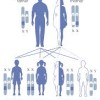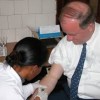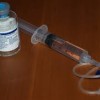Cluster of Enterobacter cloacae pseudobacteremias associated with use of an agar slant blood culturing system
Abstract
From 1 February through 12 October 1990, 27 blood cultures processed at Shiprock Hospital were positive for Enterobacter cloacae; only 3 had been reported in the preceding 12 months. Twenty (74%) of the cultures were obtained from patients without clinical evidence of gram-negative septicemia.… Read more






